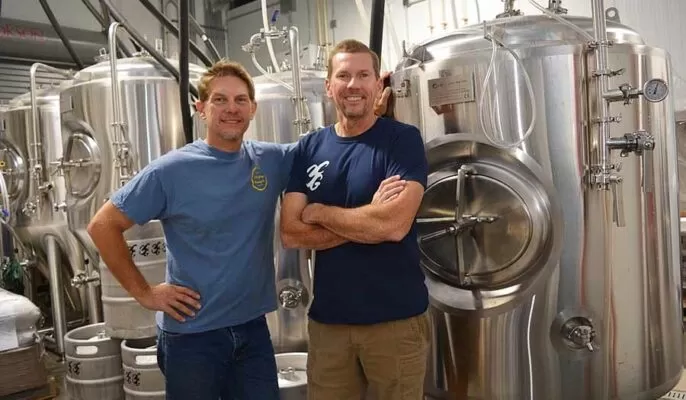In recent years, craft beer has taken the world by storm, with more and more beer lovers opting for unique, brewed beers. Microbrewery has been at the forefront of this movement, but what exactly defines microbrewery? In this article, we explore the history of microbreweries, how they differ from larger breweries, and how craft beer culture has contributed to the rise of microbreweries.
Microbrewery
A microbrewery is an owned small brewery that produces a limited number of beers. In the US, a microbrewery is defined as a brewery producing less than 15,000 barrels of beer per year, while in the UK it is a brewery producing less than 5,000 hectoliters per year. The focus of microbreweries is to produce premium beers with unique flavors and ingredients.
There is also a term “nano-brewery,” which is like the definition of a microbrewery in that it focuses on craft beer. But, Nano Brewery has no specific output or limit. the term is used to refer to breweries run by only one or two brewers. Like microbreweries, nanobreweries can sell beer in a three-tier, two-tier, or direct sales structure.
Microbrewery History
Microbreweries have a long history dating back to the medieval days when monks brewed beer in monasteries. In the United States, microbreweries started popping up in the 1970s, and with the legalization of home brewing and changes in laws, it became easier to start a brewery. The 1980s saw a boom in microbreweries and the term “microbrew” became popular. Today, microbreweries continue to thrive, with new breweries opening around the globe.

Microbrewery vs. Large Brewery
The main difference between a microbrewery and a large brewery is the scale of production. Large breweries produce beer on a large scale with an emphasis on mass production and distribution. In contrast, microbreweries produce beer in smaller batches, often using sourced ingredients and unique brewing methods. This allows microbreweries to focus on quality and flavor rather than quantity.
Craft beer culture and the rise of microbreweries
The rise of microbreweries can be attributed to the craft beer culture, which values unique and premium beers. Craft beer lovers are often willing to pay more for beers that are crafted with care and attention to detail. This has created a demand for brewed beer, and microbreweries have stepped in to meet this demand. Additionally, social media has played a role in the rise of microbreweries, with beer lovers sharing their experiences and advice online.
Craft brewery
A craft brewery is an independent brewery. A brewery of this size produces far fewer beers than its larger corporate counterparts. The term “craft” has to do with the fact that these breweries emphasize quality beer and tend to view beer production as an art form driven by passion and craftsmanship.
The craft brewing movement took off in the 1970s. Here are some important characteristics of a craft brewery:
- Craft brewers are small and independent without any substantive guidance from non-craft brewers.
- The hallmark of a craft brewery is innovation.
- Craft brewers offer new interpretations of historic styles as well as unprecedented new beer styles.
- Craft beer is made based on traditional ingredients and often includes non-traditional ingredients that provide differentiation.
- The craft brewers are often involved in the local community, offering philanthropy, donations, volunteers, and event sponsorships.
- Craft brewers often like to connect with customers in a personal and unique way.
In conclusion
In summary, the definition of a microbrewery is one that focuses on producing limited quantities of premium beer. They date back to the Middle Ages, but have seen a resurgence in popularity in recent years. Craft beer culture has played a major role in the rise of microbreweries, and beer lovers place a premium on unique, brewed beers. This trend is set to continue as new microbreweries open around the world.




